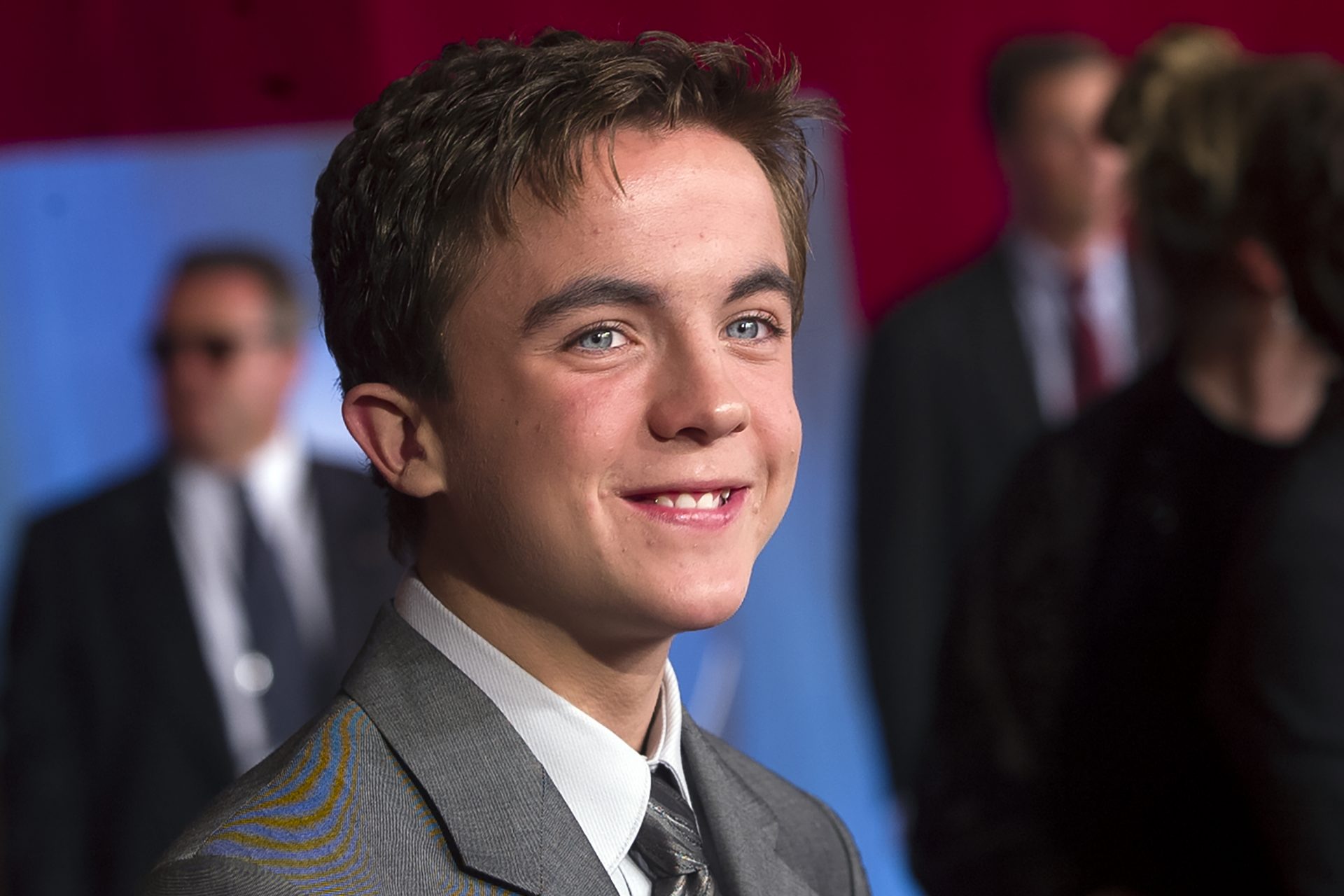When you were young, did you play with these toys and board games?
All of us have grown up and left behind some toys and games that marked our childhood. They never disappeared from our memories though. Do you remember the following toys and board games?
These dolls, also known as Cabbage Dolls, were born in the eighties and stood out for their big heads (with big cheeks) and soft bodies that invited you to hug them. The great attraction of these dolls was that there were no two alike in the whole world...
Parcheesi is one of those games with which we have all sat down to spend some time with friends and family.
Photo: Nik Korba / Unsplash
The most famous doll of all time was born at the end of the fifties, specifically in 1959, and created by the toy makers of Mattel. Barbie has been the protagonist of many girls' childhoods and has also been criticized for the stereotypes it generates. In 2016 it would undergo a great revolution changing bodies, hairstyles, and skin color.
Board games never really went out of fashion, though their heydays were in the 20th century. A good example of them, which endures, is Monopoly, the game in which we bought and sold streets and stations getting rich and fleecing our rivals. Extreme capitalism mode on.
Photo: Maria Lin Kim /Unsplash
Marbles could be used for all kinds of fun games: races, marble fights, and skills of all kinds. Its great success even gave rise to competitions with federated teams.
Photo: Ignartonosbg / Pixabay
For the most studious there was - and still is, already with its hundreds of different versions - the Trivial Pursuit game. A game of questions and several answer options with which we could demonstrate all our knowledge of geography, art and literature, history, entertainment, science and nature, and sports and hobbies. The game was invented by two Canadian journalists, CBC reports.
Before plastic, before toy brands like Mattel, there were toys like this: the spinning top. It kept us busy for many hours because it was a challenge to make it spin for the longest time. We just kept pulling the rope and watching it spin nonstop.
This simple and fun idea was successful in its origins back in the late fifties and continues to be successful today. The Lego Systems company gave us these plastic building blocks to which figures and other elements were later added and which have created a universe in themselves that has even given rise to movies. The name Lego comes from the Danish phrase "Leg Godt", which means "Play Well".
Photo: Ari Suryanata / Unsplash
A game whose history goes back centuries in the past, but which we have all enjoyed and many continue to enjoy. As simple as placing chips so that the numbers of the dots on each chip match and the first one to run out of chips wins. Another commitment to simplicity and effective entertainment.
Photo: Tom Wilson / Unsplash
As the story goes, according to the Museum of Play, the daughter of author Johnny Gruelle one day brought hom an old rag doll. It was 1915. "He drew a face on the worn fabric and called the doll Raggedy Ann," the museum's website explains. "Gruelle, a cartoonist and illustrator, wrote a children's book about Raggedy Ann in 1918." The doll has been around ever since and was said to be the inspiration for the 'Annabelle' horror movies (even though Annabelle in the film is not made of rags but of plastic).
Image: Nong Eg / Unsplash
This three-dimensional puzzle was created by the Hungarian sculptor and professor of architecture Ernő Rubik in 1974. Over time, it became the best-selling toy in the world. The game is so simple in origin and yet so difficult when it comes to solving it. It gave us hours of enjoyment or desperation in order to leave each of the sides in the same color.
Photo: The first Rubik's Cube championship in 1981, held in France
Designed by Albert Lamorisse in 1950 and marketed by Parker Brothers since 1958, the game ended up as part of the Hasbro collection like so many others. It was - and it is - a strategy and war game whose ultimate goal is to conquer the entire world.
Photo: Mathew Guay / Unsplash
Very similar to Risk, but with the aim of removing the flag from the opposing player or players, or else, eliminating all their pieces with offensive capacity. It's another strategy and war game that was successful and continues to be so, with several thematic adaptations such as 'The Lord of the Rings', 'The Chronicles of Narnia', 'Star Wars,' and 'Marvel'.
Comparable to the Lego blocks and Barbie play style, this brand created an endless series of toys five decades ago. These little dolls, 7.5 centimeters tall (less than 3 inches), only move their arms up and down, their heads from one side to the other, and their lower body as a whole. They were born in 1974 and are known for their infinite universe, with accessories and settings from all over the world and eras in time. What's more, they have creations both for children and for collectors and geeks of all kinds.
Photo: Markus Spiske / Unsplash
Marketed by Hasbro in the United States and Canada and by Mattel in the rest of the world, this game is popular to this day. Fun, educational, and entertaining for young and old since 1948.
Photo: Freysteinn G. Johnsson / Unsplash
Other common toys include rubber or plastic baby and infant dolls. In the photo, we see a Spanish version of the Nenuco line. In the US and elsewhere, there were variations like American Girl and Baby Nancy dolls, among others.
A game almost as old as history, but one that we have not stopped playing and that many brands marketed. Simple and effective. One player places circles and another crosses in a line until they manage to link three in a row with the corresponding symbol. Of course, you can also play it on a piece of paper without spending as much as a dime.
Speaking of simplicity! As a result of the inventiveness of the kids in those times when screens were not everything, the metal caps let us enjoy all kinds of games, such as races or football matches.
More modern were the Pinypon dolls. They were Playmobil-style toys and have evolved over the years. They were born in the seventies and triumphed during the eighties and nineties. Then, their drop in sales forced Famosa Group to make a radical change in them to continue marketing the puppets.
Image: PinyPon (Famosa official) / Facebook
In Hispanic markets, the brand Famosa completed its doll collection with Nancy, a youthful character that could be found in all kinds of dresses, even a communion outfit (as in the photo). Similar to the Pinypon and Barbies, these dolls have changed their appearance over the years.
These legendary soldiers bear the nickname that the American soldier had after the Second World War: 'Joe'. They were marketed since the early sixties by Hasbro and reached homes around the world. They also created a parallel universe that gave rise to comics and movies.
In the 1990s, other military dolls caused a furor among kids. However, they had been around since the sixties, when they emerged from the hands of the toy company Palitoy and ended up being another Hasbro product. Action Man began as a military character and ended up being an adventurous man, but over the years he would become a great childhood memory.
Racing cars were also a hit among kids to play with. One of the most famous and successful products in this realm is the Scalextric. It was made up of slots - miniature tracks - through which the car was electrically propelled. With controls, children could make the cars compete with each other. A revolutionary toy that was born in 1956 and that continues to be sold today.
Like Barbie, this was another toy marketed by Mattel for girls. They were small 'pocket' dolls that were created in 1983 by Chris Wiggs for his daughter Kate. They often came with briefcases with universes in which to play with them. Their very small size did not make them suitable for infants.
Also known as 'Dam Dolls', they were born in Denmark in the late fifties by a woodcutter named Thomas Dam. They became fashionable over the decades after their birth and were made by numerous manufacturers, including illegal copiers.
Photo: Public Domain Pictures / Pixabay
In the nineties, the Japanese television series 'Power Rangers' triumphed, and among the numerous merchandising that was generated from that success were these action figures. By pressing a button, we could turn our heads to see them with or without a helmet on.
Photo: Raphael Cubertafon / Unsplash
Furbies were born at the end of the 20th century, in 1998. According to its creators, this strange creature was a mixture of a mouse, a cat, a bat, an owl, and a chicken. Manufactured by Tiger Electronics (a subsidiary of Hasbro), it stood out for the use of artificial intelligence. The doll simulated what it learned from what we were telling it. It was a doll for children, but it was also liked by adults.
Photo: Alexas Photos / Pixabay
Here's another product from the Hasbro factory that has been a success since the early eighties and that endures today. They were nothing more than a few ponies of different colors, to which different and extensive colored hair was added.
This egg with a screen showing a chick that we had to take care of was a real revolution in the late eighties. Coming from Japan, it was made to be carried in your pocket, even as a key ring (for children and also for adults) and despite the simplicity of the idea, it was a real success in those years.
Photo: Cosmoh Love / Unsplash
The 'Hot Wheels' are miniature cars made with great detail from the hand of Mattel in 1968. Over time they consolidated the market and triumphed to the point that more than three billion cars of more than 800 different models have been manufactured. Tracks were incorporated to race with them and the cars have also given rise to movies, video games, and extensive merchandising.
Photo: Ben Grant / Unsplash
The Micro Machines were a concept similar to that of the 'Hot Wheels', that is, miniature cars, but with the difference that they were even smaller than the competition. In addition, as you can see in the photo, they had boats and planes as well. The Micro Machines were created by the Galoob company (currently integrated into Hasbro) in the 1980s and 1990s. Over time and the lack of sales, they would end up being sold to become collector's items.
Image: Galoob
For this toy, brands or models do not matter. Starting in the late 80s, there wasn't a child who didn't want a radio-controlled car to play with. In many cases, the toy became an experience for the not-so-young and went from carrying simple batteries to a fuel engine.
Simple, but entertaining without a doubt: the legendary multicolored springs or slinkies. We could make movements from one hand to another, stretch and shrink, or make it go downstairs. It seems silly, but so many kids are still having fun with it to this day!
Another Hasbro product, this time in the world of board games. Two opponents face each other asking questions - Is he a man or a woman? Is she blonde? Is he wearing glasses? - to discard characters and 'Guess Who?'.
Image: Matěj Baťha / Wikimedia
A game of skill and physics, because for Twister it is not enough to sit at the table like the rest of the games. You have to place your hands and feet in different colors according to the outcome of the colored wheel. A hilarious game, suitable for all possible situations and audiences.
Photo: Imslavinsky /Pixabay
There are many board games that help us stimulate our minds and a good example of this is also 'Taboo', with which we had to get our game partners to guess words right by giving clues without saying other banned words, all this with the nerves produced by the hourglass falling at the speed of light.
Image: Kristina Flour / Unsplash
A similar idea to 'Taboo', that is, we guess a word - or phrase - correctly, but, in this case, we have to do so through the drawings of the clues we give each other. No talking, only drawing! The winner is the one who guesses the most.
Like Risk, this game was launched by Parker Brothers after being developed by Anthony Pratt, a lawyer's clerk in Birmingham, UK, in 1948, before ending up in the hands of Hasbro. It's a mystery game that makes us feel a bit like Sherlock Holmes, discovering the perpetrator of a crime.
Image: Hasbro
In 'Scattergories' one person says a letter and a category and, from there, we have limited time to write down all the words that come to mind. There are two conditions: they must belong to the chosen category and begin with that letter. Seems easy, but it can be nerve-wracking.
The marble-swallowing ball games were a simple play in which some balls were released and we had to hit buttons so that our colored hippos, frogs, or any other animals, could catch and swallow them. The more the better, of course. Fun and noise in abundance.
Image: Miravia e-store
Who did not want to be a magician at some point? That was the promise any Magic Kit offered us, a complete game that helped us do a lot of tricks. And, of course, with a magic wand included!
A funny way to pretend your home was a cinema, was this machine promoted by the Spanish company Exin. The projector for children used an 8mm film format. There were similar models to this one in other countries.
Image: Exin
This card game has a lot of content and is not very simple. It was designed in 1993 by the American math teacher Richard Garfield. Made up of collectible cards with which to play roles, the game has generated a universe with more than 6 million players around the world.
Photo: Wayne Low / Unsplash
The 'Telesketch' was invented by Frenchman André Cassagnes in 1959 and first marketed in the United States in 1960 under the name 'Etch-A-Sketch'. It is a screen containing aluminum powder and styrene particles on the inside, with which you could draw using two rotary controls. A simple shake would undo your drawing. No paper needed!
By the late 80s, children were as much aware of digital revolutions as their parents - perhaps even more! A good example of that was the Game Boy, a portable video console with interchangeable games marketed by Nintendo. It provided children and adults around the world with hours of fun.
Photo: Hello I'm Nick / Unsplash
And then the years began in which video games rose. From the 80s through the 2000s, they began replacing the more traditional, 'analog' way of playing for many children. Games like Pac-Man, Super Mario, Donkey Kong, Tetris... Although many years have passed, they are still in vogue. But don't underestimate the popularity of other games on this list! The classics never die...
Photo: Man Sei / Unsplash


























































